Jefferson Rabb's Artful Author Websites [1]
Jefferson Rabb, one of the most highly sought after web designers in the publishing world, recently sat down with contributor Joshua Bodwell to discuss his craft and the evolving world of book-related websites.
1. The Snakehead [2]
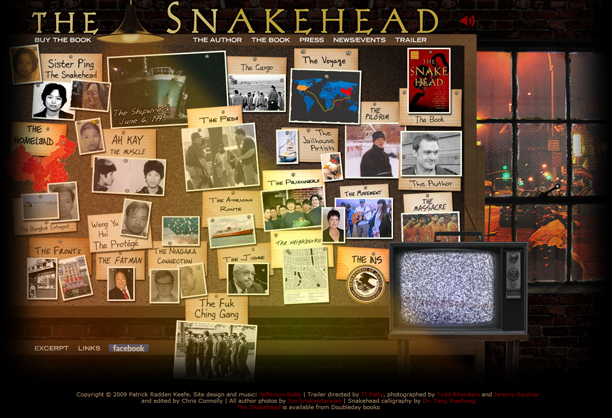
Jefferson Rabb says that when designing a website his goal is “to create an immersive environment that evokes the underlying nature of the book.” In order to accomplish this he often draws on movies, shows, visual art, and architecture that emulate the atmosphere he hopes to achieve. The website for The Snakehead, Patrick Radden Keefe’s book about human trafficking in Chinatown, “is largely based on the detectives’ bulletin board in season one of The Wire,” he says.
2. Hard-Boiled Wonderland and the End of the World [3]
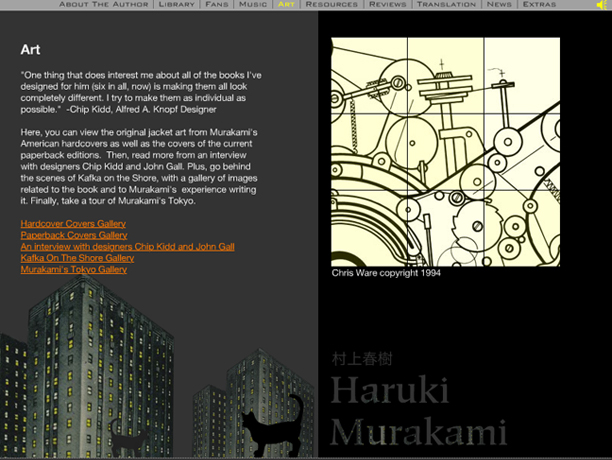
“In Hard-Boiled Wonderland and the End of the World, Murakami strictly alternates between two narratives,” says Rabb. “I took this alternation as a conceptual idea for his website…. There are two basic templates on the site: One is a light-colored beach scene, the other a dark, quasi-urban scene. As you click through the site, the pages alternate between the two, regardless of what the content of the page is. Depending on the order in which you get to it, the same page could appear either dark or light.”
3. Super Sad True Love Story [4]
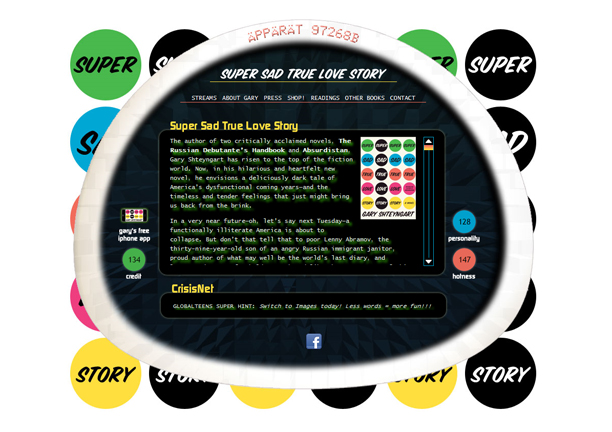
Rabb often builds his websites around an iconic image from the book. In the case of Gary Shteyngart’s Super Sad True Love Story, it was the äppärät, a futuristic equivalent of the cell phone.
4. The Manual of Detection [5]
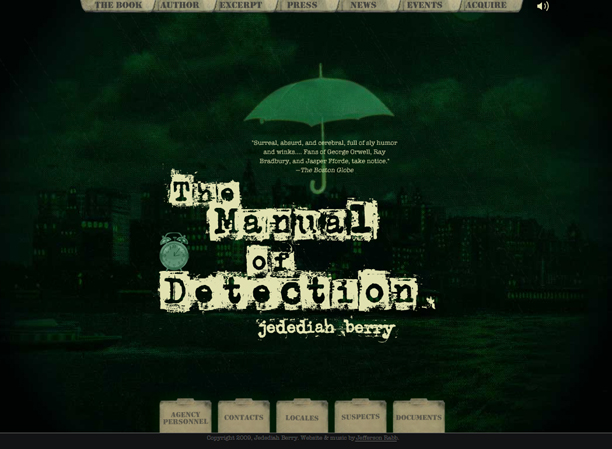
Rabb takes his cue for each project from a unique element of the book. “In the site for Jedediah Berry’s novel The Manual of Detection,” says Rabb, “you can see dossiers on the characters in the book by clicking the folders along the bottom.”
5. Then We Came to the End [6]
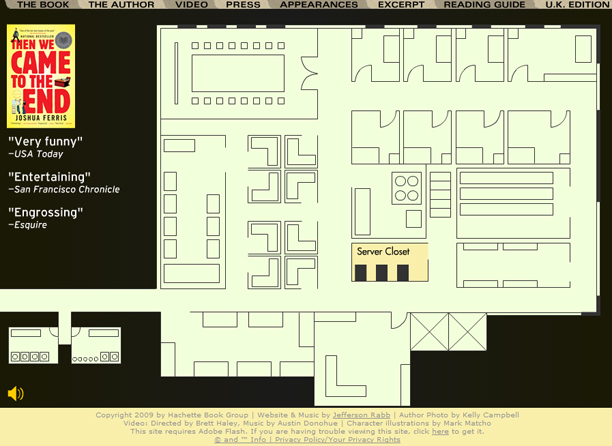
Rabb’s approach is to create websites, such as the one for Joshua Ferris's Then We Came to the End, that are “rich, atmospheric, and evocative, which hopefully captures something essential about the book,” he says. “If a site like this does its job, it will interest a reader on the strength of the atmosphere. The approach is designed to get an emotional reaction, as well as to provide some information.”
6. The Collected Works of T. S. Spivet [7]
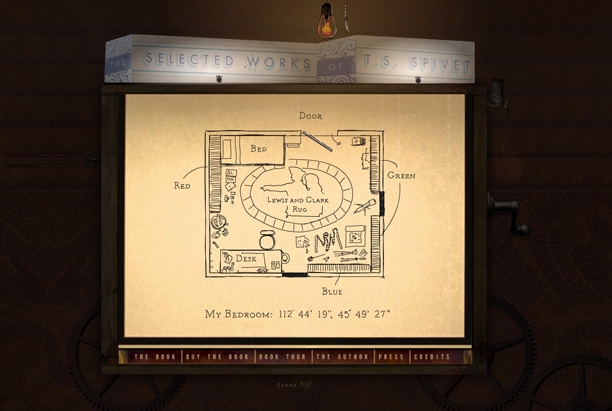
“One of the most exciting things about working on book-related websites, especially fiction-related ones,” says Raab, “is the potential to extend the story in some way, to create something that can be seen as a companion piece to the book. The site for Reif Larsen’s novel, The Collected Works of T.S. Spivet, is a good example—there is lots and lots of original content, written by the author, that expands on themes and plot lines in the book.”
7. Paisley Hanover Kisses and Tells [8]
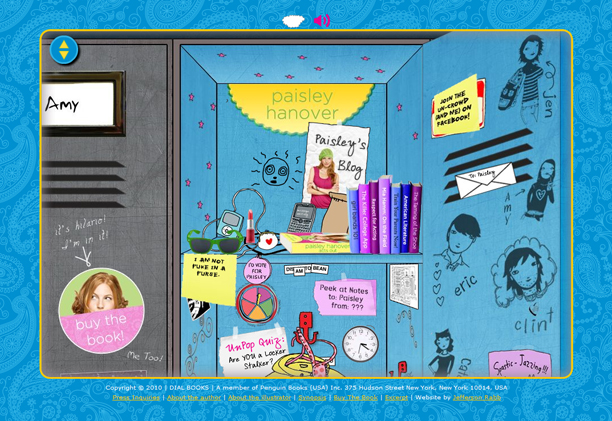
When asked if the author sites he designs, including paisleyhanover.com, will help sell books, Rabb’s honest answer is that he doesn’t know: “I’ve seen people get excited about a book after seeing the site, which is very gratifying. Just how many Amazon clicks this translates to, I couldn’t say.”
8. The Hawk and the Dove [9]
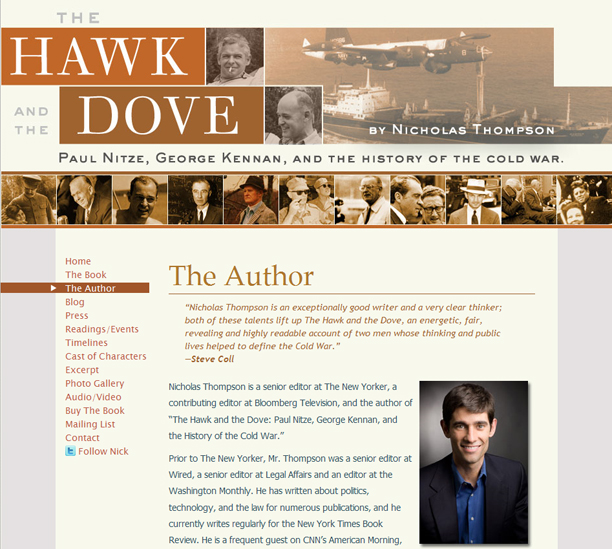
Not all of Rabb’s sites are intensely interactive. For sites such as the one for Nicholas Thompson's The Hawk and the Dove, the content depends on the author’s wishes and requirements, the specifics of each book, and what the site is intended to accomplish. “I’ll build a site meant to be an active community of an author’s fans differently than I’d build one primarily intended to evoke the emotional content of the book,” he says.
9. Unbroken: A World War II Story of Survival, Resiliance, and Redemption [10]
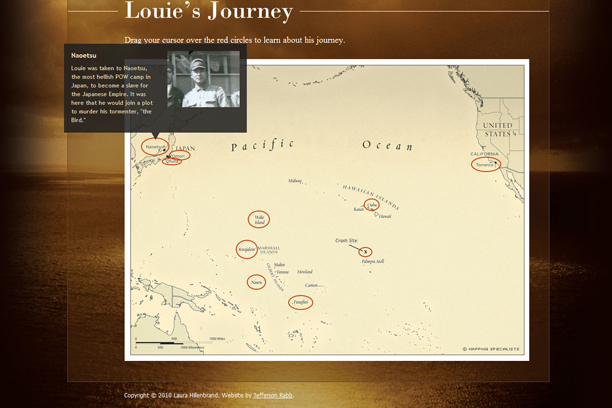
Most of Rabb’s content is directly inspired by the books he works with, including Seabiscuit author Laura Hillenbrand's Unbroken. “If I’m stuck,” he says, “it usually just means I need to read more…or more closely.”
